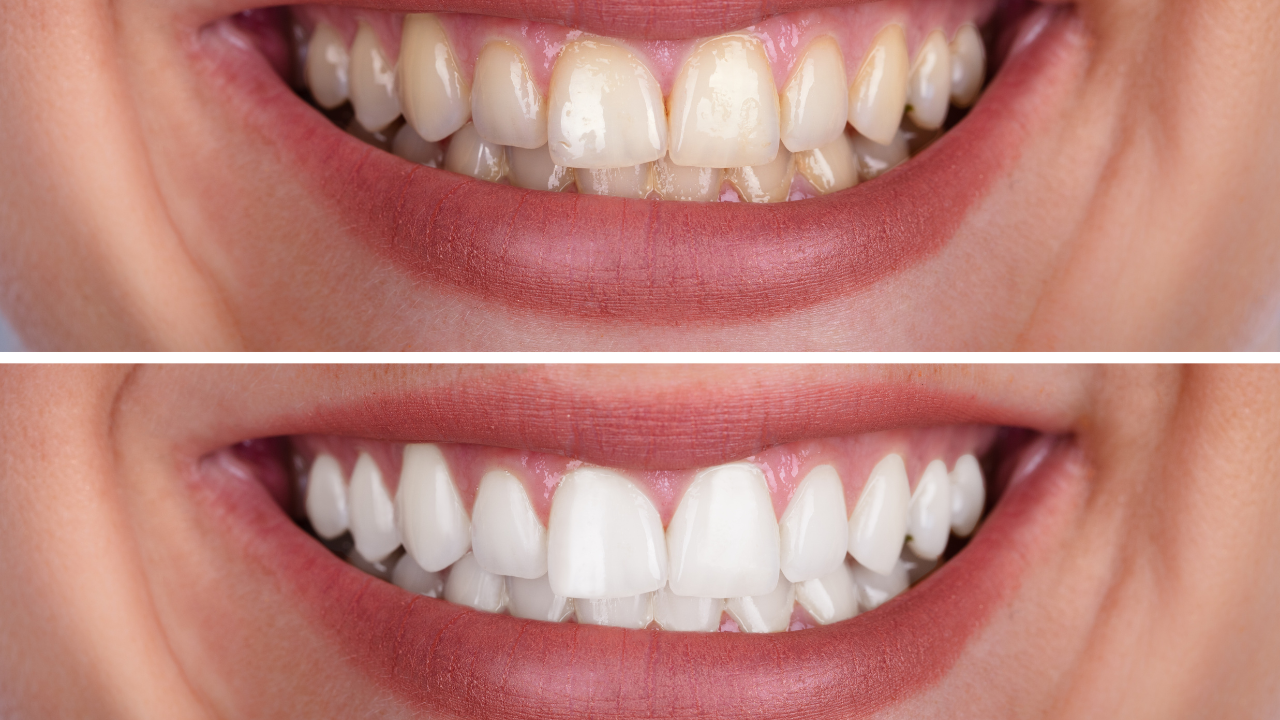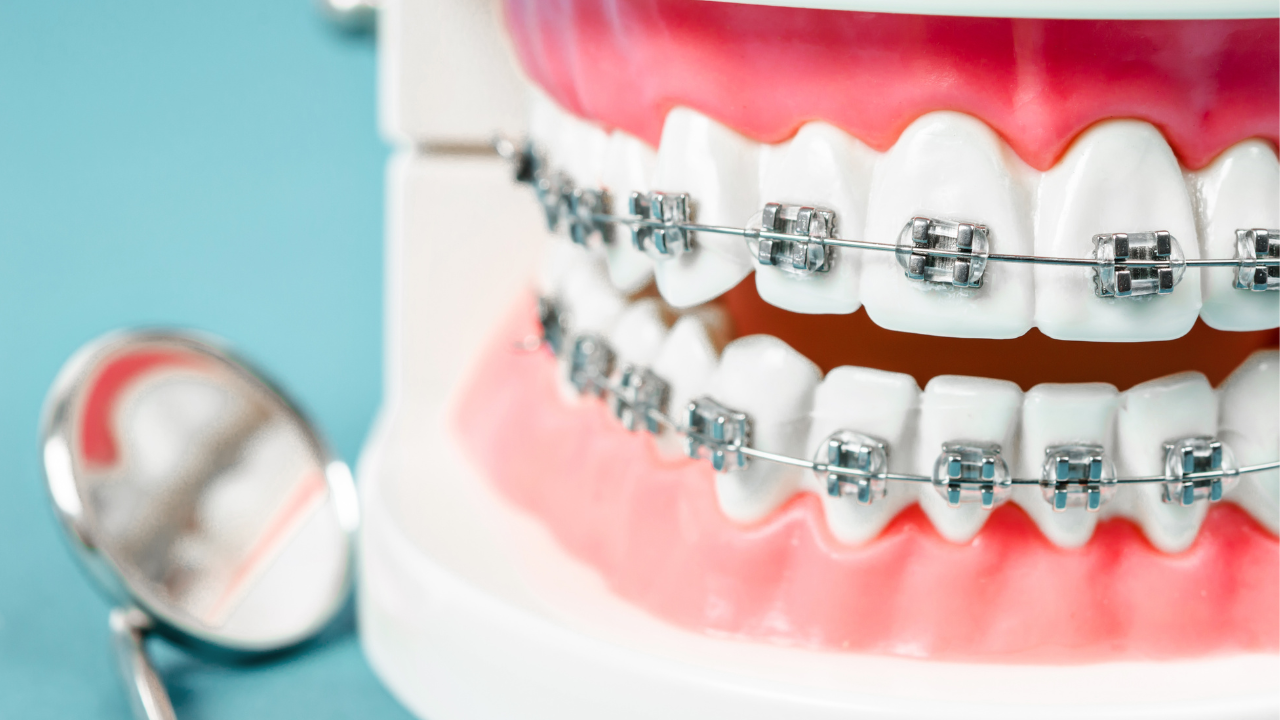Are you looking to brighten your smile and boost your confidence? Teeth whitening is a popular cosmetic dental procedure that can help you achieve a dazzling smile. As a dentist with 8 years of experience, I have witnessed the positive impact of teeth whitening on my patients self-esteem and overall dental health. I will provide you with all the essential information you need to know about teeth whitening.
Key Takeaways
- Learn about the different types of teeth whitening procedures and their benefits
- Understand how teeth whitening works and who should consider getting their teeth whitened
- Get insights into the potential side effects and frequently asked questions about teeth whitening
What is the process of whitening teeth?
Teeth whitening is a cosmetic dental procedure that lightens and brightens discolored or stained teeth. It is a popular procedure that can improve the appearance of your smile and boost your confidence.
Historically, people have used various methods to whiten their teeth, such as rubbing their teeth with charcoal or using vinegar and lemon juice. However, modern teeth whitening methods involve the use of special products and procedures that are safe and effective.
Teeth whitening can be done by a dentist or at home using over-the-counter products. Professional teeth whitening is done in-office and typically involves the use of a whitening gel that is applied to the teeth and activated with a special light. In-office whitening is more expensive than at-home whitening products, but it can provide faster and more dramatic results.
It is important to note that teeth whitening is not the same as bleaching [1]. Bleaching involves the use of a stronger product that can change the color of your teeth beyond their natural shade. Whitening, on the other hand, simply removes surface stains to reveal the natural color of your teeth.
Types of Teeth Whitening
Are you looking to brighten your smile and boost your confidence? Teeth whitening can help you achieve a brighter, whiter smile. There are several types of teeth whitening treatments available, both in-office and at-home.
In-Office Teeth Whitening
In-office teeth whitening is a professional whitening treatment that is performed by a dental professional in the dentist’s office. This cosmetic procedure uses a high-intensity light, heat, or laser to activate a whitening gel that is applied to your teeth. The gel typically contains hydrogen peroxide or carbamide peroxide, which creates a chemical reaction that breaks down stains on your teeth.
In-office teeth whitening is a quick and effective way to whiten your teeth, but it can be expensive and may not be covered by dental insurance. The American Dental Association recommends that you talk to your dentist before starting any whitening treatment.
At-Home Teeth Whitening
At-home teeth whitening treatments are available in a variety of forms, including whitening strips, trays, gels, and toothpaste. These products typically use a lower concentration of peroxide gel than in-office treatments, which means they may take longer to achieve results.
Custom whitening trays, which are made by your dentist, can provide more consistent and effective results than over-the-counter whitening strips. However, they can be messy and require the use of a cheek retractor to hold the trays in place.
Whitening toothpaste can help remove surface stains on your teeth, but they may not be effective on deeper stains or discoloration.
Natural Teeth Whitening
There are also natural methods for whitening your teeth, such as oil pulling and baking soda. Oil pulling involves swishing oil around in your mouth to remove bacteria and toxins, which can help whiten your teeth over time. Baking soda can be mixed with water to create a paste that can help remove surface stains on your teeth.
It’s important to note that natural teeth whitening methods may not be as effective as professional treatments and can even cause damage to your teeth if used incorrectly.
What is the process behind teeth whitening?
If you’re considering teeth whitening, you might be wondering how it works. Essentially, teeth whitening is a chemical process that removes stains and discoloration from the surface of your teeth. The most common whitening agents are peroxide-based, such as hydrogen peroxide or carbamide peroxide.
When these agents come into contact with your teeth, they break down the stains through a chemical reaction that releases oxygen molecules. This process helps to dissolve the stains and whiten your teeth. The peroxide gel is usually applied to your teeth using a syringe or tray, and left on for a certain amount of time.
One of the keys to successful teeth whitening is removing surface stains. These are the stains that are caused by things like coffee, tea, and red wine, and they can be removed with a whitening treatment. However, deeper stains, such as those caused by antibiotics or trauma, may not be as easily removed.
Teeth Whitening Side Effects
Teeth whitening is a popular cosmetic dental treatment that can help improve the appearance of your teeth. However, like any dental procedure, there are potential risks and side effects associated with teeth whitening.
Common side effects
The most common side effects of teeth whitening are tooth sensitivity and gum irritation. Tooth sensitivity occurs when the teeth become more sensitive to hot or cold temperatures, or sweet or acidic foods and drinks. Gum irritation can occur when the whitening solution comes into contact with the gums, causing them to become red, swollen, or even bleed.
Long-term risks
While teeth whitening is generally safe, there are potential risks associated with improper use. Overuse of whitening products can cause damage to the enamel [2], which can lead to tooth sensitivity and pain. In addition, using whitening products on teeth with gum disease can cause further damage to the gums.
Tips for minimizing side effects
To minimize the risk of side effects, it is important to follow the instructions provided by your dentist or the product manufacturer. Some tips for minimizing side effects include:
- Using a desensitizing toothpaste before and after treatment
- Avoiding hot or cold foods and drinks for a few days after treatment
- Using a soft-bristled toothbrush to avoid further irritation to the gums
- Taking breaks between treatments to allow the teeth and gums to recover
Benefits of Teeth Whitening
Are you self-conscious about your smile? Do you avoid showing your teeth in pictures or social situations? Teeth whitening can help boost your confidence and give you a brighter, more beautiful smile.
Psychological and Aesthetic Benefits
Teeth whitening can have a significant impact on your appearance and self-esteem. A brighter smile can make you look younger, healthier, and more attractive. It can also improve your mood and overall sense of well-being.
Impact on Oral Health and Hygiene
Professional teeth whitening treatments can also improve your oral health and hygiene. By removing surface stains and discoloration, you can help prevent tooth decay and gum disease. Additionally, by investing in professional whitening treatments, you may be more motivated to maintain good oral hygiene practices, such as regular brushing and flossing.
Who Should Get Their Teeth Whitened?
Teeth whitening is a cosmetic procedure that can help improve the appearance of your smile. But is it right for everyone? Here are some criteria to consider when deciding if teeth whitening is right for you.
Criteria for Ideal Candidates
Teeth whitening is most effective on natural teeth that have yellow, brown, or orange stains. If you have discoloration from medications, injury, or genetics, teeth whitening may not be as effective. Additionally, if you have gum disease or tooth decay, you should address those issues before pursuing teeth whitening.
If you meet the following criteria, you may be a good candidate for teeth whitening:
- You have healthy teeth and gums
- You have natural teeth (not veneers or dentures)
- You have yellow, brown, or orange stains on your teeth
Considerations for Those with Dental Restorations or Fillings
If you have dental restorations or fillings, teeth whitening may not be the best option for you. Dental restorations and fillings do not whiten like natural teeth, so you may end up with uneven color if you whiten your teeth. In some cases, your dentist may recommend replacing your dental restorations or fillings to match your newly whitened teeth.
Advice for Individuals with Specific Dental Conditions
If you have sensitive teeth, you may experience discomfort during teeth whitening. Your dentist may recommend desensitizing toothpaste or a lower concentration of whitening gel to minimize discomfort. If you have a lot of staining, your dentist may recommend multiple whitening sessions to achieve your desired results.
Lifestyle Habits
Certain lifestyle habits can contribute to tooth staining. Coffee, tea, and red wine are all known to stain teeth. Smoking is another major contributor to tooth discoloration. If you regularly consume staining foods or beverages or smoke, you may need to whiten your teeth more frequently to maintain your results.
Frequently Asked Questions
How long can I expect my teeth whitening results to last?
The longevity of teeth whitening results varies depending on the individual. If you consume a lot of staining foods and drinks such as coffee, tea, and red wine, your results may not last as long. Generally, you can expect your teeth whitening results to last anywhere from six months to two years. Regular brushing and flossing, as well as avoiding staining foods and drinks, can help prolong your results.
Are there effective teeth whitening options I can do at home?
Yes, there are several effective teeth whitening options that you can do at home. Whitening toothpaste can help remove surface stains, but it may take several weeks or months to see results. Whitening strips and gels are also available over-the-counter and can provide noticeable results in a few days. However, it’s important to follow the instructions carefully to avoid damaging your teeth or gums. You can also ask your dentist about take-home whitening kits that they can provide.
What should I avoid doing before undergoing a teeth whitening procedure?
Before undergoing a teeth whitening procedure, it’s important to avoid consuming staining foods and drinks such as coffee, tea, and red wine. Smoking and using other tobacco products can also stain your teeth and should be avoided. If you have any dental work such as fillings or crowns, it’s important to note that teeth whitening will not change their color. It’s also a good idea to have a dental cleaning prior to the procedure to ensure that your teeth are free of plaque and tartar.
Which teeth whitening method is considered the most effective?
The most effective teeth whitening method is generally considered to be in-office whitening provided by your dentist. This method uses a higher concentration of whitening agents and can provide noticeable results in just one visit. However, this method can also be more expensive than other options. Take-home whitening kits provided by your dentist can also be effective, but may take longer to achieve noticeable results.




